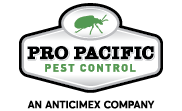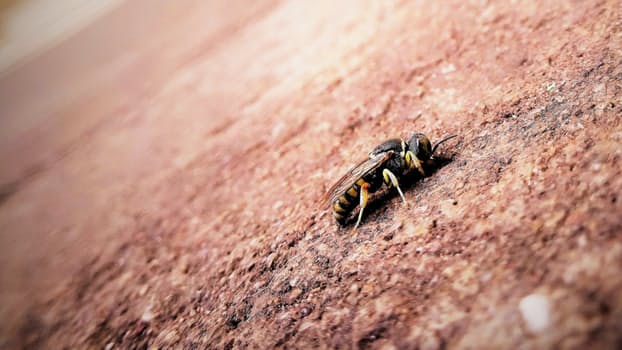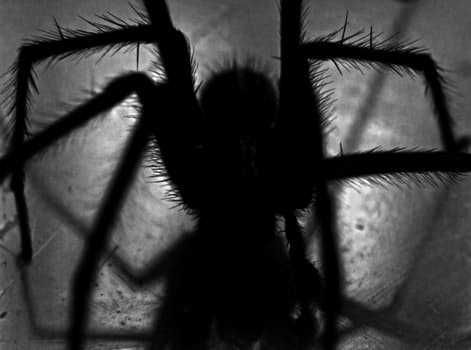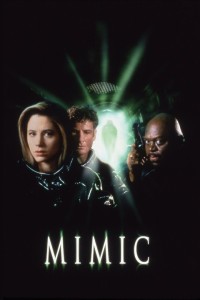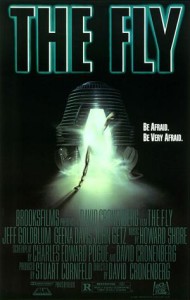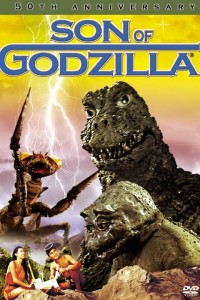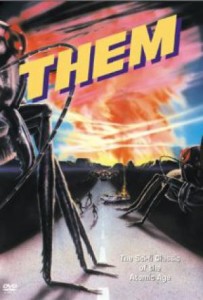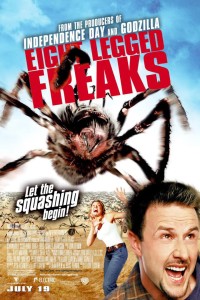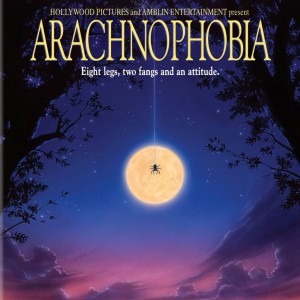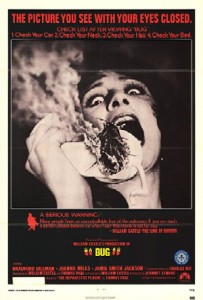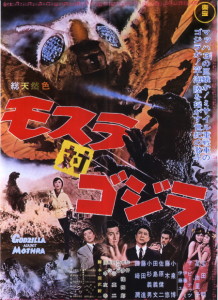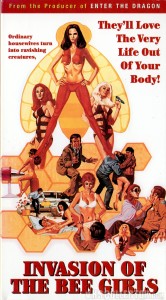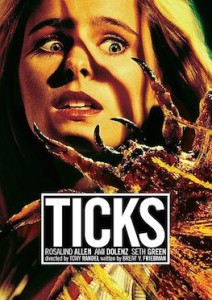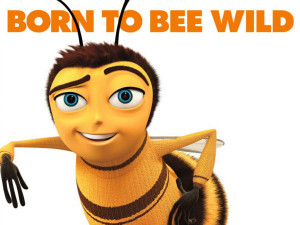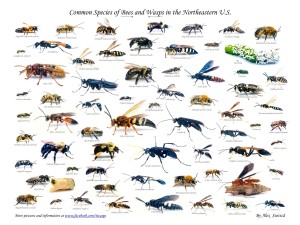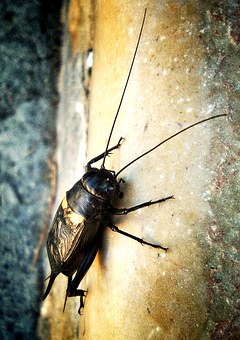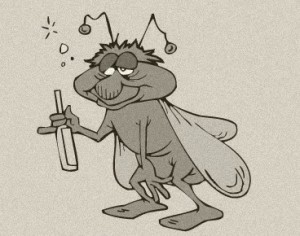Uncategorized
Keep Summer Bugs Away!
As temperatures rise, so does the pest population! Ants start getting busy invading outdoor BBQs and picnics, Mosquitoes start buzzing around ears, and flies start to infiltrate our leftovers!
We’ve got some quick tips to help YOU keep the pests at bay during your summer days!
- Warmer, wetter weather can lead to influxes of mosquito swarms. Eliminating standing pools of water will eliminate breeding areas for mosquitoes and help keep those annoying visitors from making their presence overwhelming. Common places where standing water can accumulate include beneath piping, close to air-conditioning units, and even in the water-bowl beneath your potted plants!
- Cockroaches also LOVE dark, damp places, so be sure to keep all areas below your sinks / tubs / etc as dry as possible! Be sure to check near where pipes enter / exit the home (especially if you have a musty basement).
- Wasps and bees like to set up shop pretty much ANYWHERE! Try to fill voids (wall voids, eaves, and porch ceilings, etc) when possible. Dispose of dried or hollowed-out tree stumps.
- Ants can set up shop in practically any environment, but they’re more apt to move in if they have abundant food sources. Scattered crumbs and leftovers, open trash containers and rotting wood or pieces of litter can make your yard seem like PRIME REAL ESTATE for a colony of ants to move in!
Of course, even the best laid plans can go awry, and pests can pop up in even the most diligent home! For these occasions, the best solution is a quick call to your friendly neighborhood pest control operator! With a variety of services designed to fit your need and budget (be it ants, roaches, rodents or bees) Pro Pacific Pest Control ready to answer your call!
Uncategorized
Infestation is coming…
Summer is on the way, and with warmer weather, that means more picnics, more outings, more outdoor activities, and MORE BUGS!
Many bugs come out of their self-imposed “hibernation” in flourish in the warmer temperatures.
Already this year, we’ve seen a large up-tick in pest activity! From pantry pests to rats to wasps to bed bugs, pests are letting their presence be known — in fact, we’ve even had to deal with an opossum or two!
Just like humans, insects and rodents LOVE warmer weather… and they ALSO love a cozy locale to hang their metaphorical hat. Unfortunately, they usually end up in OUR homes as a result (after all, don’t we spend a lot of time and money making our homes as cozy as can be).
We’ve talked at length about Do it Yourself ways to prevent pest infestation, but the BEST way is to call a professional!
After all, we’ve take an oath to protect you, your family, and your home from ALL the pests that plague the realms of men!

Uncategorized
Top 50: Bed Buggiest Cities
It’s a new year, and for many people, that means a “new you!” mindset, but for some cities in the US, 2016 is shaping up to be “More of the Same.” Recently, stats were released indicating the “Top 50” cities with the highest occurrences of bed bugs. For the FOURTH year in a row, the “Windy City” of Chicago earned the top spot… though fellow metropolises Los Angeles, Washington, D.C. and New York weren’t far behind… each ranking in the top 5.
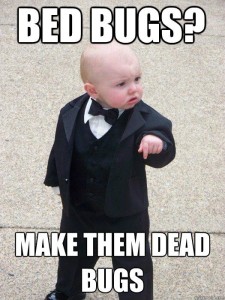
Our youngest pest control operator will give them an offer they can’t refuse… And then take a nap.
Looking at the list (see below), it seems like bed bugs can hit anywhere and everywhere… and to be honest, they can! Bed bugs are hardy creatures, and can easily survive on the open road (often infestations come as a result of travel. Vacationers may pick up bed bugs from even the most posh of resorts (as evidenced in this video)! Bed bugs are tremendous hitch-hikers, and can find their way back to your home by stowing away in clothing or luggage. Once they arrive and set up residence in YOUR residence, it can be a painful process to get rid of your unwelcome guests!

Unfortunately, the REAL infestation is nowhere near this cute OR cuddly.
As always, the best defense is prevention over extermination, but how do you go about it? Well, according to the U.S. Department of Health and Human Resources, The best thing to do is detect (and avoid) the little pests before it’s too late!
- Look for bed bugs hiding in the mattress, box spring, and bed frame.
- Check under the mattress and along the seams (edges) of the mattress.
- Look for small, reddish spots on the mattress – they could be signs of bed bugs.
- Search other furniture near the bed, like night stands.
Of course, if you ever ARE infested (despite your best efforts), you can CALL US to schedule an inspection and we’ll take care of your bed bug problem PRONTO!
TOP 50 Bed-Buggiest Cities
1. Chicago
2. Los Angeles
3. Washington, D.C.
4. New York
5. Columbus, Ohio
6. Philadelphia
7. Detroit
8. Cincinnati
9. Richmond-Petersburg, Va.
10. Baltimore
11. Raleigh-Durham, N.C.
12. Cleveland-Akron-Canton, Ohio
13. Dallas-Ft. Worth
14. San Francisco-Oakland-San Jose
15. Indianapolis
16. Charlotte, N.C.
17. Houston
18. Denver
19. Atlanta
20. Buffalo, N.Y.
21. Greenville-Spartanburg, S.C.-Asheville, N.C.
22. Nashville, Tenn.
23. Phoenix
24. Knoxville, Tenn.
25. Boston-Manchester
26. Milwaukee
27. Dayton, Ohio
28. Seattle
29. Pittsburgh
30. Norfolk-Portsmouth-Newport News, Va.
31. Tampa-St. Petersburg, Fla.
32. Grand Rapids-Kalamazoo-Battle Crk., Mich.
33. Lexington, Ky.
34. Hartford-New Haven, Conn.
35. Charleston-Huntington, W.Va.
36. Omaha, Neb.
37. San Diego
38. Orlando-Daytona Beach-Melbourne, Fla.
39. Louisville, Ky.
40. St. Louis
41. Cedar Rapids-Waterloo-Dubuque, Iowa
42. Champaign-Springfield-Decatur, Ill.
43. Miami-Ft. Lauderdale, Fla.
44. Kansas City, Mo.
45. Sacramento-Stockton-Modesto, Calif.
46. Syracuse, N.Y.
47. Colorado Springs-Pueblo, Colo.
48. Albany-Schenectady-Troy, N.Y.
49. Honolulu
50. Myrtle Beach-Florence, S.C
Uncategorized
The Hidden Danger in your Christmas Tree
If you’re anything like us, Christmas spirits are in full swing! Visions of sugar plums are dancing in your head, the mistletoe has been hung, and the eggnog is chilled and ready for consumption.
And of course, you can’t forget about the Christmas tree — the centerpiece to many people’s decorations this season!

Sure, there is a plethora of ways you can decorate your tree… every tree is unique and many people do different iterations from year to year — but if you’ve decided on a real (i.e. not plastic) Christmas tree for this holiday season, you may be inviting some guests that are less than desirable!
When choosing a tree out in the wild (or even in a “Christmas tree park”), there is a good chance when you may bring some insects with you!
That’s right– holiday hitchhikers! Bugs and other tiny creatures are known to hide and live in real trees during the winter months. Even during “unseasonably warm” winters like is being experienced in some regions.
So what is the best way to keep pests out of your house this season? Well we can’t do anything about your crazy Uncle Larry, but we CAN help keep insects out…
Perhaps the most important thing that you want to do before taking your tree home with you (or at least before you enter the home) is to simply give it just a good shake. Shaking the tree gets all the loose particles and maybe even some of the bugs and different creatures out of the tree. Obviously, do this outside you house so that the debris (and any bugs) don’t litter your nice floors! Many Christmas tree parks have a shaker to get the loose pine needles and such out before they send you on your way, but it’s a good idea to give it another shake just before you go inside, as well.
On the bright side, none of the insects that we would normally find in our trees are harmful, but you never know what could be lurking inside them.
Insects like black widows certainly could be in there (though extremely unlikely) — Many insects are “shy,” and may not be visible right away, so it’s a very good idea to give the tree a shake or two “just in case.” Using pesticide or an aerosol spray could leave an unsightly residue on your beautiful Christmas tree, and we doubt you want that to be the focus of conversation this Christmas!
It just goes to show, it pays be cautious when you’re taking in the holiday pine.
If you run into any pest control issues, be sure to contact us!
Uncategorized
Brace Yourself! Winter is Coming… Wait! It’s Already Here!!!!
It’s no doubt, winter has arrived. Fortunately, in Southern California, the temperature change for winter is much milder than, say, Philadelphia or Chicago, but changes in weather often mean that pests will be searching for a new home (possibly YOURS!) to bed down in during the seasonal change. Today, we help you prepare AGAINST infestation (if you haven’t done so already)!
1. Attics – An attic is a fantastic place for rodents to nest, especially if you have a lot of insulation! Be sure to replace all damaged roof tiles and attic vents. Also, use plastic seal-able storage bins to prevent them from rummaging around in your stuff!
2. Pipes and drains – Most insects are attracted to moisture and places with excess water, so be sure to inspect and replace any leaky pipes and get rid of any water-damaged wood around them!
3. Chimneys – Birds, bats and squirrels like to make homes in chimneys. Chimney caps are a simple and quick solution to keep them away this winter!.
4. Garages – Although it’s MEANT for car storage, many of us end up storing a plethora of other things inside, as well (or even instead of) as the family car. Just like in attics, be sure to use plastic seal-able bins when storing items. Also try to keep them about a foot off the floor and approximately a foot away from the walls (for easy inspection).
5. Kitchen – Probably the biggest “offender” when it comes to pest infestations, the key to securing your kitchen is to make sure all food is sealed in airtight containers. Also be sure to regularly empty contents of garbage cans and clear up any food debris.
6. General Exterior/Interior- – Don’t be a pack-rat (no pun intended)! A tidy home lends itself LESS to rodents and other pests moving in…. although it’s not a full ward against them! Have a professional do a THOROUGH inspection — cracks or gaps around windows and doors are easy to overlook, especially if you aren’t completely familiar with the signs of rodent activity. Rodents can enter any opening larger than 1/4 inch. It pays to cover these gaps from both an energy saving and a pest prevention point of view. Be sure to install weather stripping around windows and doors, as well as door sweeps beneath doors.
Hopefully, you’re now prepared for the winter season, and prepared to repel any pests that may come your way! Need help getting your home protected? Give us a call, we can give you GUARANTEED protection against any critter that may want to visit for the holidays!
Uncategorized
What to do when you’ve been stung
Home treatment for a bee sting, and prevention
In recent blog posts, we’ve been talking about how to avoid getting stung…. but sometimes, it still happens (despite our best efforts). Most bee stings can be treated without medical attention, and we’re gonna take a look at some dos and don’ts for that situation.
When a honey bee stings a person, the barbed stinger is not pulled back out from the wound. The bee leaves behind not only the stinger, but also part of its abdomen, digestive tract, muscles and nerves.
DO:
-
DO stay with the person to watch out for any severe reaction that could develop… and DO call for urgent medical help if there is a severe allergic reaction
-
DO remove the stinger promptly by wiping over it with a piece of gauze, or scrape a finger nail, or a card over it
-
DO remain calm
-
DO wash the site of the sting with plain soap and water
-
DO apply a cold compress or offer aspirin or acetaminophen (if desired) to reduce swelling
DON’T:
-
DON’T leave the person alone – they may develop a severe reaction
-
DON’T use tweezers to remove the stinger
-
DON’T squeeze the stinger or scratch the sting – this could aggravate the problem and lead to an infection
-
DON’T panic!
-
DON’T Burst any blisters that develop since this can lead to infection.
==============================
So there we go! Ten Do’s and Don’t’s in case you’re ever unfortunate enough to get stung by a bee (or any other stinging pest)!
Uncategorized
Bee Stings – Prevention and Treatment
Recently, we reviewed some of the similarities (and differences) between bees and wasps, and how to identify them.
For most people, bee and wasp stings are a painful annoyance at most. For others, though stings can be deadly. Today, we’ll be looking at how to AVOID being stung, and what to do if you’re unlucky enough to get stung anyway.
What is a bee sting?
A bee sting is a puncture wound by a bee or wasps’s stinging apparatus — which consists of a sac of venom attached to a barbed stinger. When a bee or wasp stings, the sac contracts, dumping venom into the tissue. This venom causes a localized reaction in most people… but for some, it results in a need for urgent medical care.
Due to the prevalence of bees as pollinators, it’s estimated that 3 to 4 times as many people die from stings than from snakebites each year. The most “feared” bee in the US is the Africanized honeybee (which has earned the nickname “killer bee,”). Africanized honeybees are more aggressive than “common” honeybees, attack in swarms, and will chase a target up to a quarter mile!
What are the symptoms of a bee sting?
Most reactions to a sting are mild to moderate and do not involve a severe allergy – in children, for example, only about 3% experience any allergic reaction.
An uncomplicated bee or wasp sting causes instant, sharp pain, which usually lasts a few seconds and a swollen red mark at the site of the sting, which can be itchy or painful. the swelling will peak at around 48 hours, and the resulting welt may last for up to a week!
More severe reactions include: Extreme redness and swelling; an entire extremity or limb swelling up; rash, fever, nausea and headache (these are often associated with multiple stings). Multiple stings can be fatal for children. In rare cases, swollen and painful joints can occur. Of course if any severe symptoms pop up (such as nausea, vomiting or diarrhea, feeling dizzy or fainting, difficulty breathing and low blood pressure), seek medical attention immediately, as these could be signs of a severe allergic reaction — and can be fatal if left untreated!!!
Prevention
So how can you prevent getting stung? The most obvious solution is “don’t go near a hive!” Bees are often still present, though — even if there ISN’T a hive around– since they are pollinators… they’re busy and well-traveled! Bees can cover up to 50 THOUSAND total miles in their roaming to make 1 pound of honey!
DO:
-
Do keep clothing and your body clean – sweat may attract bees or wasps.
-
Do wear shoes.
-
Do make sure to remove nests near the home – by a bee professional! (We offer live removals, as well!)
-
Do cover food containers and trash cans.
-
Do use widely brimmed cups (instead of cans) to make seeing a bee easier while picnicking
-
Do take care with any activities such as garden trimming that could provoke a nest.
DON’T:
-
Don’t wear brightly colored clothing.
-
Don’t use fragrances and cosmetics that have floral scents.
-
Don’t walk barefoot or wear flip flops or open face shoes.
-
Don’t remove nests yourself – get a professional because many insects sting when provoked (bees are aggressive usually only when hives are attacked). Also, if any portion of honeycomb is left, bees will often return! Professionals can make sure that everything is removed properly!
So there you go! We’ve looked at what bee stings are, and how to AVOID them! Next week, we’ll look at what you should do if you’re unlucky enough to get stung — despite your best efforts!
If your home has a bee or wasp problem, give us a call!
Uncategorized
Human-Hunting Honeybees and other Halloween Hallucinations
Halloween is almost on us! In preparation, we have the candy bowl ready, home-made spider webs hung and Jack-O’-Lanterns carved… But no Halloween celebration is TRULY complete without a scary movie marathon! Today we’re going to TREAT you to 13 “Must-watch” movies that will give you chills!
- 1 — MIMIC
Initial release: August 22, 1997
RATING: 6.5/10
When a cockroach-spread plague threatens to decimate the child population of New York City, evolutionary biologist Susan Tyler (Mira Sorvino) and her research associates rig up a species of “Judas” bugs and introduce them into the environment, where they will mimic the diseased roaches and infiltrate their grubby habitats. So far so good … until the bugs keep on evolving and learn to mimic their next prey — humans!
- 2 — THE FLY
Initial release: August 15, 1986
RATING: 8.5/10
When scientist Seth Brundle (Jeff Goldblum) completes his teleportation device, he decides to test its abilities on himself. Unbeknownst to him, a housefly slips in during the process, leading to a merger of man and insect. Initially, Brundle appears to have undergone a successful teleportation, but the fly’s cells begin to take over his body. As he becomes increasingly fly-like, Brundle’s girlfriend (Geena Davis) is horrified as the person she once loved deteriorates into a monster
- 3 — SON OF GODZILLA
Initial release: December 16, 1967
RATING: 5.5/10
In this Japanese monster movie, the massive Godzilla comes to the aid of his newborn son, who hatches from an egg on a remote island where scientists are conducting experiments with radioactivity. Revealing a surprising paternal streak, Godzilla tries to teach his much smaller progeny how to use his powers. The father/son team must then battle giant insects, including praying mantises and a formidable spider. Can Godzilla protect his curious tyke from the gargantuan bugs?
- 4 —- THEM!
Initial release: June 16, 1954
RATING: 9/10
While investigating a series of mysterious deaths, Sergeant Ben Peterson (James Whitmore) finds a young girl (Sandy Descher) who is unable to speak. As Peterson joins forces with FBI agent Robert Graham (James Arness) and scientist Dr. Harold Medford (Edmund Gwenn), he discovers that all the incidents are due to giant ants that have been mutated by atomic radiation. Peterson and Graham, with the aid of the military, attempt to find the queen ants and destroy the nests before the danger spreads.
- 5 — 8-LEGGED FREAKS
Initial release: May 30, 2002
RATING: 5/10
The residents of a rural mining town discover that an unfortunate chemical spill has caused hundreds of little spiders to mutate overnight to the size of SUVs. It’s up to mining engineer Chris McCormack (David Arquette) and Sheriff Sam Parker (Kari Wuhrer) to mobilize an eclectic group of townspeople into battle against the bloodthirsty eight-legged beasts.
- 6 — THE SWARM
Initial release: July 14, 1978
RATING: 3/10
Scientist Dr. Bradford Crane and army general Thalius Slater join forces to fight an almost invisible enemy threatening America; killer bees that have deadly venom and attack without reason. Disaster movie-master Irwin Allen’s film contains spectacular special effects, including a train crash caused by the eponymous swarm.
- 7 — ARACHNOPHOBIA
Initial release: July 18, 1990
RATING: 8/10
After a nature photographer (Mark L. Taylor) dies on assignment in Venezuela, a poisonous spider hitches a ride in his coffin to his hometown in rural California, where arachnophobe Dr. Ross Jennings (Jeff Daniels) has just moved in with his wife, Molly (Harley Jane Kozak), and young son. As town residents start turning up dead, Jennings begins to suspect spiders, and must face his fears as he and no-nonsense exterminator Delbert McClintock (John Goodman) fight to stop a deadly infestation.
- 8 — THE MOTHMAN PROPHECIES
Initial release: January 25, 2002
RATING: 6.5/10
Based on true events in Point Pleasant, Virginia, “The Mothman Prophecies” examines a series of inexplicable occurrences through the eyes – and mind- of one man. A man (Richard Gere) is driven to investigate the mysterious circumstances surrounding his wife’s (Debra Messing) death — and how they might be connected to the strange phenomena in a town four hundred miles away.
- 9 — BUG
Initial release: June 17, 1975
RATING: 4.5/10
An earthquake releases a strain of mutant cockroaches with the ability to start fires, which proceed to cause destructive chaos in a small town. The studies carried out by scientist James Parmiter, however, reveal an intent with much more far-reaching consequences.
- 10 — THE WASP WOMAN
Initial release: 1995
RATING: 4/10
A doctor’s (Daniel J. Travanti) wasp-hormone youth serum has unwelcome side effects for a 40-ish cosmetics executive (Jennifer Rubin).
- 11 — MOTHRA VS. GODZILLA
Initial release: April 29, 1964
RATING: 6.5/10
A greedy developer unwittingly hatches a gigantic baby moth upon Tokyo, while Godzilla strikes once again.
- 12 — INVASION OF THE BEE GIRLS
Initial release: June 1, 1973
RATING: 5/10
A G-man (William Smith) finds two women (Victoria Vetri, Anitra Ford) have created an army of beauties who seduce men to death.
- 13 — TICKS
Initial release: June 17, 1993
RATING: 5/10
A group of troubled teenagers are led by social workers on a California wilderness retreat, not knowing that the woods they are camping in have become infested by mutated, blood-sucking ticks.
=============================================================================
So there we have it: 13 movies that are guaranteed to make it a little harder to sleep this Halloween night. Hope you have lots of popcorn (or candy corn!!!) to keep you company! Are there any movies YOU consider “must watch for Halloween? Let us know!
If you have a pesky pest situation of your own, don’t hesitate to contact us!
****(All movie descriptions courtesy IMDB.com)
Uncategorized
Bees VS Wasp : Which is Which?!?
Do YOU know the difference between a wasp and a bee?
Sure, most of the time we don’t care WHAT it is once they’ve stung us, but it’s good to know which insect you’re dealing with so you know how to react!
This week, we’ve broken down some key differences between the two.
Bees and wasps come in a variety of colors, so sometimes it’s not as simple as looking at their color scheme… there are black bees and yellow wasps (in fact, there are black and yellow flies)!
-
One of the easiest indicators is the insect’s body. Wasps are slender, while bees are more rotund… mainly because their feeding habits are different. Wasps are predators, and have to hunt their prey (other insects and bugs)… so their bodies are sleeker to give them an advantage when hunting. Bees, on the other hand, have a more rotund body… more suited for gathering pollen and transporting it to feed their young.
-
Nests also differ between wasps and bees. Most bee nests (most commonly referred to as “hives”) are manufactured, but sometimes bees make their homes in tree cavities, buildings or even holes in the ground. A wasp’s nest consists of a pulp out of chewed-up fibers and its own saliva. Wasps tend to build in hidden, out of the way places, like under decks or in remote crevices.
-
Social or Asocial? Bees are more “social” insects – their hives can have up to 50,000+ residents, while even large wasp nests usually contain well under 10,000 residents!
-
Winter Workouts. Another difference (though not necessarily easily observable) is that wasps hibernate during winter, while (surprisingly) bees do not. Bees go into what is often called a “winter cluster.” They remain in the hive, and group together to “shiver,” keeping the queen bee (who is at the center of the huddle) warm!
So there you have it! Of course, there are more similarities and differences between these insects, but the above gives you a great primer for identification. The next time you see something buzzing around, take a second glance and see if you can tell into which family it fits!
BONUS: WARNING: PAYBACK IS PAINFUL:
PROTIP: You might want to think twice before you seek revenge against the insect that stung you: If you squish a bee or yellow jacket, it can give off a scent that acts as an alarm and its nest is within 15 feet (sometimes more) then hivemates will hunt you down and sting you many, many more times! If you have a bee or wasp infestation, give us a call and get expert help to eliminate your problem.
Uncategorized
Weird news – Buggy Brewers?
It’s #ThirstyThursday! Most of us would find a bug in our drink to be a MAJOR disappointment –in fact, we’d demand our server bring us another– but some people have embraced the idea!
WayBack Burgers recently introduced their own “Oreo Mud Pie Cricket Protein Milkshake.” The shake boasts 24 grams of protein and is (allegedly) loaded with tons of chocolate flavor (we hope it’s enough to mask the crunch of cricket)! The restaurant chain has added the menu item across the country, but it’s part of a larger growing trend…. Around the world, there’s been an uptick in cricket consumption, as a 3.5-ounce serving of crickets contains nearly 50 grams of protein… double the protein as a 3.5-ounce serving of beef!!!
Elsewhere, NC State University scientists are experimenting with adding bugs to beer during the brewing process. According to their observations, some arthropods (like beetles, bees, and other bugs) contain yeast… which just HAPPENS to be a major component in the brewing process. The yeast is used to convert sugar into alcohol during the fermenting process. The type of yeast can influence the taste of the drink — alcohol can receive up to about 50% of its taste from the yeast used in production…. Scientists say that it opens up the possibilities to completely new flavors!
——————————————————–
So are buggy brews the drink of the future? Should the FDA will start adding a “bug by volume” tab next to the “alcohol by volume” label? Let us know what you think! Contact us if you have a bug infestation that doesn’t come in the form of a healthy protein drink!
